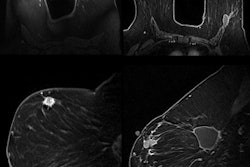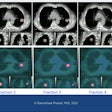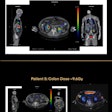Stereotactic radiosurgery could be a useful treatment option for patients with localized primary renal cancer who do not have a prior history of pelvic or abdominal radiation, and for whom surgery is not appropriate, researchers in Ohio have concluded.
Results of the phase I trial were presented at the 2012 American Society for Radiation Oncology (ASTRO) annual meeting by Dr. Rodney Ellis, who is clinical director and vice chair for clinical affairs of radiation oncology at University Hospitals Seidman Cancer Center.
The patient group ranged in age from 58 to 92 years (mean age, 80) and included 15 men and five women. The patients were assigned to treatment groups according to a four-part dose-escalation schema.
All patients received an initial dose of 600 cGy per fraction, followed by dose escalation in 200-cGy increments per fraction to total maximum doses of 24 Gy (four patients), 32 Gy (six patients), 40 Gy (four patients), and 48 Gy (six patients). Doses were escalated after patients showed nonprohibitive levels of toxicity within 180 days of treatment initiation.
Dose-limiting toxicity was defined as any grade 3 or higher gastrointestinal or genitourinary acute radiation toxicity. Imaging and post-treatment biopsy results were evaluated for tumor response and treatment efficacy, according to Ellis and colleagues.
Ellis presented two- to 41-month patient outcomes. Only two patients, both of whom received the highest radiation dose, experienced acute toxicity (grade 1 fatigue). Late toxicity was limited to worsening of pre-existing chronic renal disease in two patients. No patients to date have experienced gastrointestinal or small bowel toxicity.
Tumor response rates were also encouraging. Tumors remained stable or decreased for 94% of the patients.
"Our first trial shows that low to moderate doses of stereotactic radiosurgery is a safe and viable option for renal cancer patients who typically do not have surgical options," Ellis said in a statement about the study.
Further studies are needed to determine safe levels for the maximum dosage, the researchers noted.



















